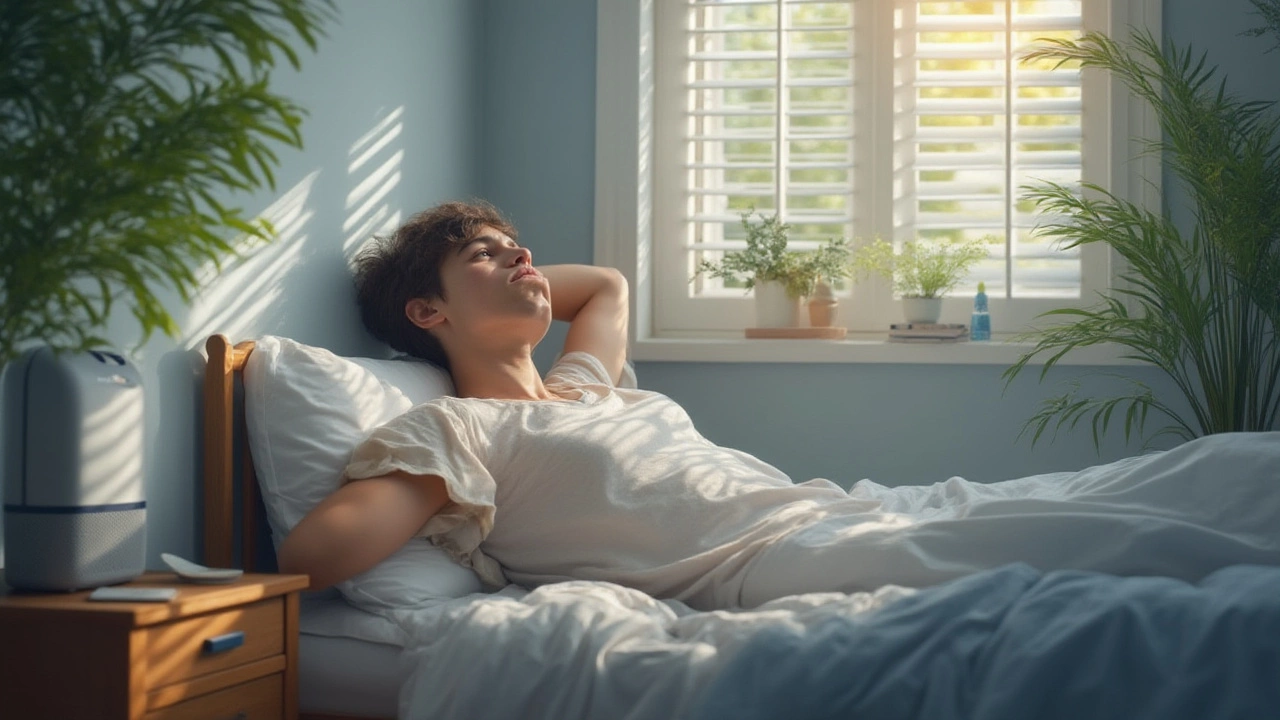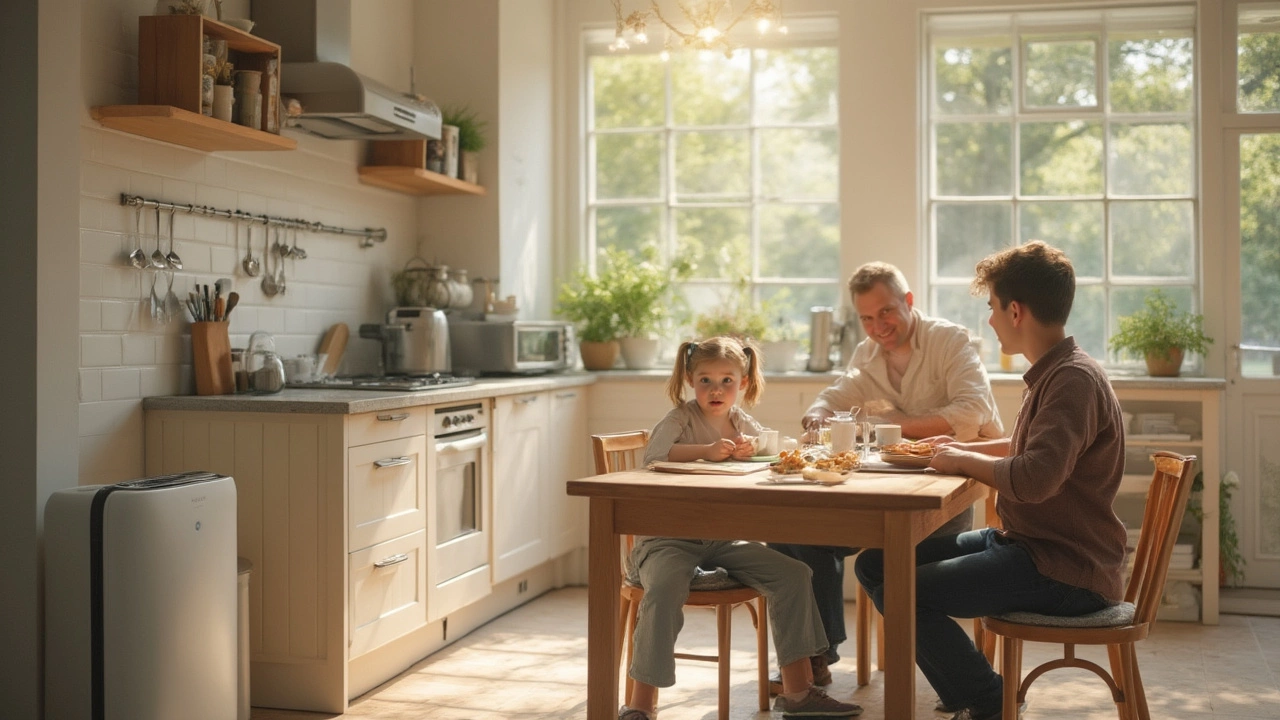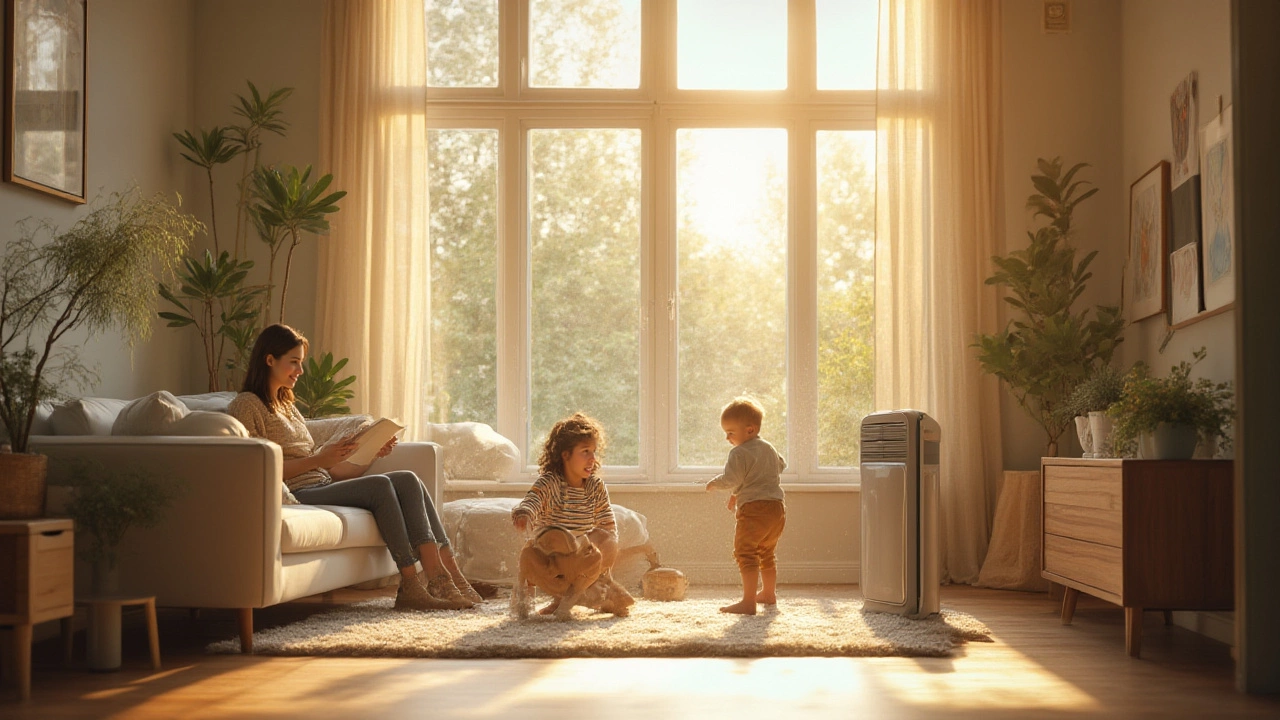Bet you didn’t know that the air in your living room could be dirtier than next to a busy street. Some studies have shown indoor air quality is two to five times worse than outdoor air. It’s not just dust, either—think pet dander, pollen, volatile organic compounds, and, yep, even that burnt popcorn smell you never really got rid of. So, getting an air purifier makes perfect sense, but the trick is, where exactly should you put that thing to get the most out of it?
Why Location Changes Everything About Air Purifiers
There’s this common mistake—people just plop their brand-new purifier in a corner and call it a day. But corners are usually where airflow goes to die. A good quality HEPA or carbon filter air purifier can clean the air, but not if the air never really reaches it. The whole idea is to let your purifier 'see' as much air as possible, kind of like positioning a fan to cool down a room instead of just a specific spot.
Think about the way your HVAC system works: vents are placed specifically to distribute air evenly and efficiently. Air purifiers have a similar need. You want to tap into the natural air movement in your space, not fight against it. Studies from the EPA have shown that air purifiers work fastest when placed in open spaces where air circulates freely. So, the absolute worst place? Hidden behind couches or curtains. The best? Out in the open, away from walls and at least a few feet from electronic devices that can mess with the airflow.
It sounds simple, but the room you choose matters too. According to experts at the American Lung Association, bedrooms usually see the biggest benefits because we spend a third of our lives there. Kitchens and living rooms also rank high—especially open-plan living spaces where cooking, socializing, and lounging happens in the same air.
But there are exceptions, of course. Got a non-shedding goldendoodle? Maybe you only need it in the kitchen, not the bedroom. Have a family of four with seasonal allergies and a fluffy cat? A purifier in the living room isn’t enough.
Prime Air Purifier Spots in Different Rooms
You might be wondering if you should move your air purifier around or stick to one spot. The answer? Sometimes you need more than one for real coverage, especially in bigger homes. But let’s break this down by room, so you get the most useful tips for your home life.
Bedroom: This is the big one, especially for allergy and asthma sufferers. Place the unit about 6-10 feet from your head when you’re sleeping—ideally across from your bed, not right next to you, to prevent dryness or fan noise from keeping you up. Avoid putting it by the window, as outside air can dilute its effect. Make sure nothing blocks the inlet or outlet vents; even a small nightstand can mess with air movement.
Wondering about the floor? In most cases, standard air purifiers pull in air from the bottom and push clean air out the top or sides, so keep them off thick carpets but don’t worry if they’re on hardwood or tiles.
Living Room: This space is trickier, especially with all the furniture. Go with a central spot, away from walls and big furniture, usually about three feet out from the nearest wall. If you have a ceiling fan, keep the purifier out of its direct breeze to avoid short-circuiting clean air. Don’t tuck it behind your TV or next to a speaker—electronics sometimes interfere with sensors.
Kitchen: Cooking releases plenty of particulates, especially from frying, broiling, or using a gas stove. Pop your unit on a nearby counter (watch for water and grease), or just off to the side on a stand at about countertop height. Just not too close to the actual cooking area, or you’ll gum it up faster.
Home Office: Electronics, printers, and even office chairs give off VOCs. Keep the purifier within six feet of your main working spot, but not jammed in a corner. If you snack at your desk, this doubles as a handy crumb-duster, too.
Kids’ Rooms or Nurseries: Safety matters here. Cord-free, tabletop, or wall-mounted units work best. Place it as far away from the crib or toddler bed as possible, but still within the general space, and avoid any temptation to use it as a white-noise machine right next to your child’s head.
If you’re in a small apartment, a solid, well-placed air purifier in the middle of your main room can cover a lot of ground. Just remember—the joking rule is, if your robotic vacuum can easily find the air purifier, you’ve probably nailed the spot.

The Worst Mistakes When Placing Air Purifiers
Not all placement mistakes are obvious, and some totally ruin the effort you put into getting a purifier in the first place. Let’s call out the biggest errors so you don’t make them.
- Shoving it in a Corner: You’d think tucking it away is best for aesthetics, but it’s terrible for air flow. The purifier has trouble 'finding' dirty air and can’t evenly distribute the clean stuff.
- Behind Curtains: Just don’t. Curtains block intake and outflow, stranding the dirty air right where you started.
- Close to Heaters or Air Conditioners: Rapid temperature changes can wear on the motor and ruin sensor readings. The purified air also gets moved or blown away before it mixes properly.
- Direct Sunlight: UV rays can weaken plastic or cause some models’ sensors to misread actual air quality stats. If you’re going all-natural, put it in indirect light, not baking in a window.
- Obstructed Intake or Output: Keep at least 18 inches (that’s about the length of your forearm) clear around every vent and intake. Anything blocking it—even a plant—can wreck performance.
Not all mistakes are permanent. If you notice the air still smells funny or your allergies won’t quit, move things around. Use the 'tissue test': put a tissue near the purifier’s intake, and if you don’t feel a pull, it’s probably in a dead air zone. Also, techy tip—several smart air purifiers offer real-time PM2.5 or VOC readings, so you can actually see air quality improving as you try different spots.
And don’t overthink size, either. Most residential purifiers work best in rooms listed on the box—don’t try to purify your whole home with a unit meant for a studio apartment.
Boosting Purifier Performance: Extra Tips
Here’s where it gets interesting. Having a well-placed air purifier is only half the game. How you use it changes everything. First off, always keep doors and windows closed in the room where the purifier’s running. Open windows are like open invitations for more pollutants—it undoes a lot of the hard work your device is doing.
Check the filter indicator lights once a month, even if the box says 'change every 6 months.' Indoor particles can spike after pollen season, wildfires, or even marathon baking sessions. Dirty filters stop working way before they look gross. For people who suffer with allergies or live near busy streets, buying backup filters in advance is a sneaky smart move—especially because supply chain hiccups are still popping up sometimes.
A lot of folks don’t realize this one: air purifiers move air, so if your home is super cluttered, you’re choking off air pathways. Reorganize your space for flow—less is more.
If you’re looking to get nerdy, check out the CADR (Clean Air Delivery Rate) number on your device. It tells you how much filtered air it delivers per minute. A rule of thumb: match the purifier’s rating to your room size. For example, a 200 CADR unit works for rooms up to 300 sq ft. If your air quality changes a lot (pet sheds, cooking fumes), consider running your purifier on high for a few hours, then dialing it back to auto or a quieter mode.
Some folks turn their units off to save energy, but it’s better to run on low anytime the room is in use, especially overnight if you have asthma or allergies. For homes in wildfire zones, keeping units at max during high-pollution days is a literal lifesaver. And if you have an older model, check if you can run it with a smart plug, so you don’t forget to turn it off when you leave the house for long stretches.
Here’s a quick comparison table of top air purifier placements and their benefits:
| Room | Ideal Placement | Common Mistake | Coverage Tip |
|---|---|---|---|
| Bedroom | Across from bed, away from window | Next to curtains or under nightstand | 6–10 feet from pillow, clear outflows |
| Living Room | Central, away from large furniture | Behind TV or in corner | 3 feet out from wall essential |
| Kitchen | Counter or stand, near food-prep area | Directly next to stove | Wipe down frequently for grease |
| Office | Within 6 feet of desk | Jam in windowless corner | Keep electronics at least 1 foot away |
| Kids’ Room | Open, safety-checked location | Close to crib/playpen | Go for cordless or wall-mounted |

Special Scenarios: Allergies, Asthma, and Wildfire Smoke
Dealing with allergies, asthma, or living in areas prone to wildfire smoke? Here’s where strategic placement really impacts your daily comfort. Say you wake up every morning stuffy, even though you’re religious about washing your sheets. This could be a sign that your air purifier isn’t actually covering the 'breathing zone' around your bed. Don’t put it on the floor under your bed; instead, get a stand so it’s at about nose-level while you’re sleeping—that’s where you breathe best.
During wildfire season, EPA guidelines recommend putting purifiers in your 'clean room'—that is, the room where you spend the most time when the air quality index (AQI) spikes. Don’t run it in the hallway or near drafty doors. Seal windows and doors as tightly as possible and use towels or specialty seals for any drafts.
If your kids have asthma, move air purifiers to wherever they play most often, not just where they sleep. For allergy-prone teens or adults, purify the space where you keep your laundry—pollen often clings to clothes and shoes. Got pet allergies? Try putting the purifier between your seating area and the pet’s favorite napping spot.
A 2023 study by Johns Hopkins showed that running a HEPA air purifier in the bedroom of house dust mite allergy sufferers reduced allergy symptoms by up to 60%—but only if the device was placed near the bed, not blocked by anything on the floor. So, location really does equal results.
Another neat trick: If you work out at home and are sensitive to dust, position your purifier near your exercise setup to keep airborne dust from landing in your lungs. Breathability matters a lot when your heart’s pumping harder.
Can’t hear yourself think above the purifier’s fan? Use smart scheduling features or plug-in timers. Run it high when you’re not in the room, then let it hum gently when you’re present for noise comfort.

